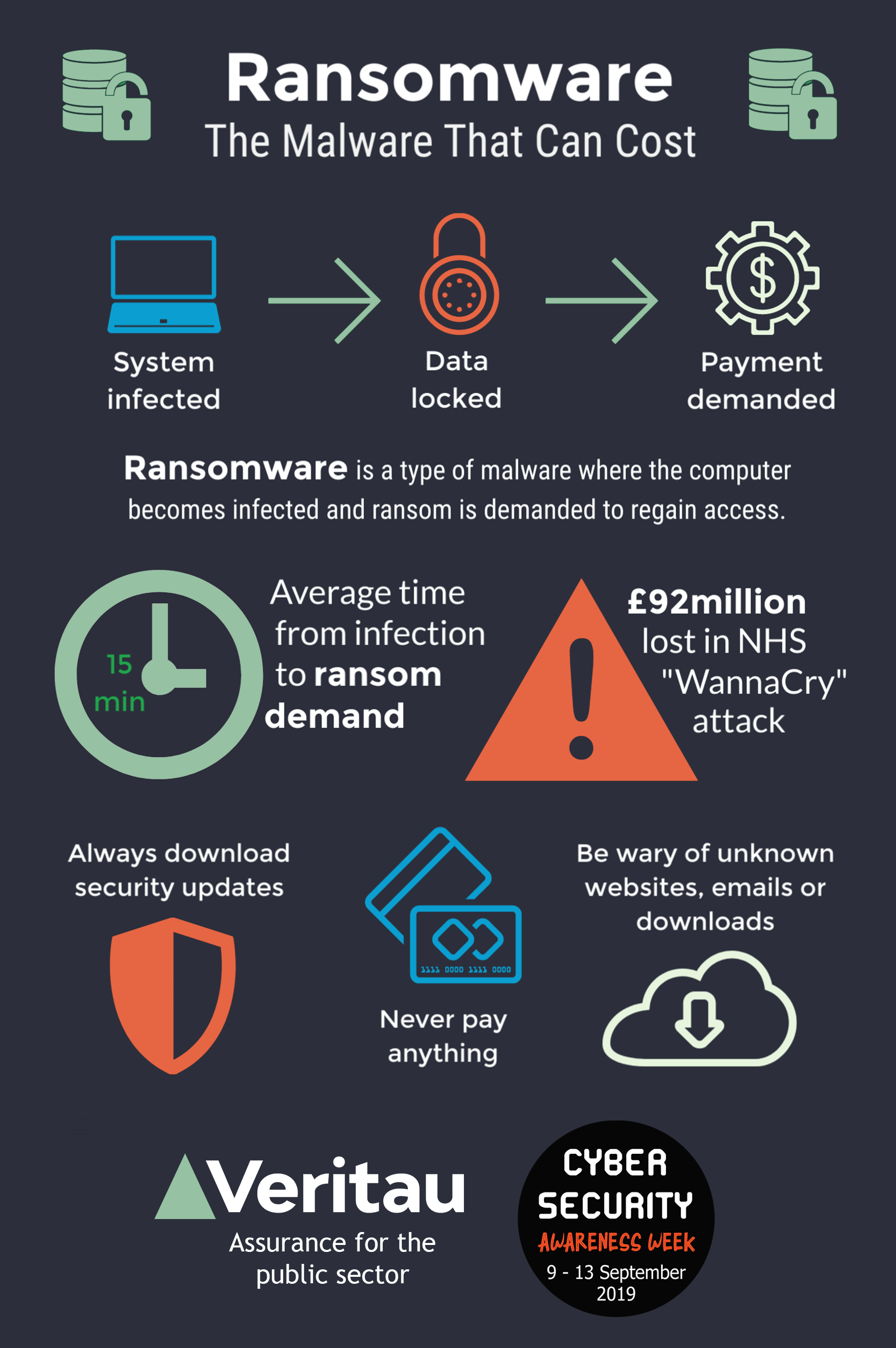Ransomware protection has become an absolute necessity as cybercrime flourishes, exploiting vulnerabilities in organizations worldwide. With ransomware attacks increasing at an alarming rate, traditional endpoint protection methods alone are no longer sufficient for safeguarding against these threats. A recent survey highlighted that a significant number of businesses, despite adopting multiple solutions, still fell victim to ransomware, underscoring the urgent need for robust security measures. This alarming trend emphasizes the importance of enhancing cybersecurity awareness among users, particularly against sophisticated phishing attacks that commonly deliver ransomware. By investing in comprehensive security awareness training, organizations can strengthen their defenses, effectively leading to improved ransomware prevention and a more resilient security posture.
Ransomware defense is now a critical focus for companies aiming to thwart damaging cyber threats that jeopardize their operations. As the cybersecurity landscape evolves, the reliance on conventional endpoint defenses proves insufficient for stopping these malicious attacks. Organizations are increasingly recognizing that safeguarding their systems requires more than just technology; they must also empower their employees with the knowledge to combat social engineering schemes, such as phishing attacks. This shift highlights a vital aspect of modern information security, illustrating that the human element is paramount in ransomware resilience. By establishing comprehensive security training programs, businesses can create a formidable frontline against ransomware, ultimately bolstering their overall security framework.
Understanding Ransomware and Its Impact on Organizations
Ransomware is a malicious software that encrypts a victim’s data, rendering it inaccessible until a ransom is paid. This cyber threat has increasingly become a primary source of revenue for cybercriminals, and its impact on organizations can be devastating. A recent study found that 33 percent of surveyed organizations experienced a ransomware attack within just one year, demonstrating the rampant nature of this threat in today’s digital landscape. The financial implications of such attacks are severe, not just in terms of the ransom itself, which averages between three to five bitcoins, but also due to the downtime and resources needed for remediation.
In addition to the immediate loss of access to data, organizations face a multitude of ancillary costs. The average attack reportedly affects six endpoints and two servers per incident, indicating that ransomware is not selective and can spread quickly across networks. This widespread impact leads to significant operational disruptions, with an average of 12 hours of downtime for users and IT resources being heavily taxed for recovery efforts. Companies must recognize the extensive ramifications of ransomware attacks, as the consequences extend far beyond the initial breach.
The Importance of Ransomware Protection Measures
Despite the implementation of various endpoint protection solutions, many organizations still fall prey to ransomware. A staggering 53 percent of those who invested in multiple security measures still experienced a breach, highlighting a critical gap in traditional defense strategies. To fortify defenses against ransomware, organizations must adopt a layered security approach, which includes not only advanced technological solutions but also comprehensive security awareness training for their employees. This is essential as ransomware is often deployed via phishing emails that exploit human vulnerabilities.
Antivirus software alone is often insufficient in mitigating ransomware threats; therefore, incorporating training programs aimed at educating employees about phishing tactics is paramount. Empowering users to recognize and avoid suspicious emails can effectively bolster an organization’s overall security posture. The notion of cultivating a ‘human firewall’ is gaining traction as businesses acknowledge that informed employees are key to preventing ransomware infections.
Implementing Effective Security Awareness Training
Security awareness training is an integral component of any robust cybersecurity strategy. Organizations surveyed highlighted the necessity of training programs that teach employees how to discern phishing attacks from legitimate emails. Such education significantly reduces the risk of human error—one of the leading causes of ransomware infections. The results from the KnowBe4 survey showed that many employees who interacted with a ransomware simulator failed to recognize the simulated phishing attempt, emphasizing the need for continuous training and updates to ensure proficiency in recognizing threats.
Furthermore, these training sessions should not only focus on email threats but also encompass best practices for endpoint protection. This includes proper data handling, secure password protocols, and recognizing other social engineering tactics used by cybercriminals. By fostering a culture of security awareness, companies can significantly enhance their defenses against ransomware and other cyber threats, effectively turning their workforce into a crucial line of defense.
Future Trends in Ransomware Prevention
As ransomware continues to evolve, so must the strategies employed to combat it. Emerging trends in ransomware prevention indicate a shift towards more integrated security solutions that combine technical defenses with human factors. Organizations are beginning to use advanced behavioral analytics and AI-driven tools to predict and prevent potential ransomware attacks. These innovations aim to identify suspicious behavior before a breach occurs, thereby reducing the likelihood of ransomware taking hold in the first place.
Additionally, as the landscape of cyber threats changes, organizations must be proactive in updating their cybersecurity protocols. Regular assessments and updates of security measures, coupled with ongoing training for employees, will be essential. As cybercriminals become more sophisticated, organizations that prioritize comprehensive ransomware protection strategies are better positioned to defend themselves against multi-faceted cyber threats.
Building a Resilient Cybersecurity Framework
Creating a resilient cybersecurity framework is vital for the prevention of ransomware attacks. This framework should emphasize the importance of not just technology solutions, but also the behavior and readiness of employees. With data breaches often stemming from human error, organizations must take steps to develop a strong ‘human firewall’ through continuous education and training, increasing overall cybersecurity awareness among all staff levels.
Moreover, a comprehensive cybersecurity policy should include regular drills and simulated attacks. These proactive measures can significantly improve an organization’s response time and effectiveness, reducing the impact of any potential ransomware attack. By adopting a holistic approach that integrates technology, training, and regular assessments, businesses can ensure a far more secure environment against ransomware and other cyber threats.
The Necessity of Comprehensive Endpoint Protection
Endpoint protection serves as the first line of defense against ransomware threats. As organizations increasingly rely on remote work environments and mobile devices, ensuring comprehensive protection across all endpoints is critical. Many traditional security tools fall short in detecting advanced ransomware techniques, making it essential for businesses to invest in up-to-date endpoint solutions that incorporate advanced threat detection capabilities.
Modern endpoint protection solutions should encompass features such as behavioral analysis and automated response mechanisms. These technologies can help identify anomalies that suggest a ransomware attack is in progress, enabling immediate action to contain the threat. When combined with robust security awareness training, organizations can create a formidable barrier against ransomware, substantially lowering the risk of a successful attack.
Responding Effectively to Ransomware Incidents
Effective incident response planning is crucial for organizations that wish to mitigate the impacts of ransomware attacks. A well-defined response plan can help limit damage, restore operations quickly, and maintain stakeholder confidence. Organizations should develop a detailed incident response strategy that outlines roles, communication channels, and remediation procedures to ensure a cohesive approach during a ransomware crisis.
Additionally, conducting regular incident response drills helps organizations prepare for potential attacks. These simulations can highlight weaknesses in response protocols and reinforce the importance of having a timely communication strategy. With the alarming statistics showing that many firms fail to pay the ransom to recover their data, developing a strong response plan becomes invaluable in reducing downtime and preserving data integrity.
Raising Awareness About Phishing Attacks Among Employees
Phishing attacks are one of the primary delivery methods for ransomware, making it essential for organizations to focus on raising awareness about these threats among employees. Continuous education and training on recognizing phishing attempts can drastically lower the risk of ransomware infections. The findings from a recent survey showed that many users who had training still fell victim to simulated phishing attempts, indicating that more tailored training programs are necessary.
To effectively combat phishing attacks, companies should implement regular workshops, quizzes, and feedback sessions focusing on identifying suspicious emails and links. Encouraging an environment where employees can report phishing attempts without fear can further enhance organizational cybersecurity. By fostering a culture of vigilance and awareness, businesses can safeguard their networks from the invasive impacts of ransomware.
Utilizing Technology for Enhanced Ransomware Defense
Organizations must leverage technology to bolster their defenses against ransomware. Implementing cutting-edge solutions that utilize machine learning and artificial intelligence can help identify and neutralize threats before they infiltrate systems. These advanced technologies can analyze patterns associated with ransomware behavior, allowing organizations to act swiftly against potential breaches.
Additionally, regular updates and patches to software are critical in protecting networks from known vulnerabilities often exploited by ransomware. Robust cybersecurity practices, combined with advanced technology, set the stage for a comprehensive defense against evolving ransomware threats. By staying ahead of potential attacks and proactively addressing vulnerabilities, organizations can create a stronger line of defense.
Frequently Asked Questions
What is ransomware protection and why is it important for cybersecurity?
Ransomware protection refers to the strategies and tools deployed to defend against ransomware attacks, which are prevalent in today’s cybersecurity landscape. Given that 33% of organizations experienced a ransomware attack recently, having robust ransomware protection is crucial to safeguard sensitive data and maintain business continuity.
How can endpoint protection help in ransomware prevention?
Endpoint protection is essential for ransomware prevention as it secures individual devices within a network. However, the recent studies show that even organizations with multiple endpoint protection solutions faced ransomware attacks, indicating the need for additional measures such as user education and security awareness training.
What role does security awareness training play in ransomware protection?
Security awareness training enhances ransomware protection by educating employees about the risks of phishing attacks, which are a primary vector for ransomware delivery. By training users to recognize and avoid suspicious emails, organizations can strengthen their defenses against such attacks and reduce the chances of infection.
Why is it necessary to address phishing attacks in ransomware protection strategies?
Phishing attacks are the leading cause of ransomware infections, as attackers often use deceptive emails to trick users into downloading malware. Incorporating strategies to combat phishing in ransomware protection is vital, as it directly targets the human element, which can significantly reduce vulnerability to attacks.
What impact do ransomware attacks have on businesses, and how can they be mitigated?
Ransomware attacks can disrupt not only individual workstations but also multiple endpoints and servers, leading to significant downtime and resource expenditure. To mitigate this impact, businesses should implement comprehensive ransomware protection strategies, including endpoint security, robust backup solutions, and security awareness training.
Are antivirus protections sufficient for ransomware protection?
Antivirus protections alone are often insufficient for ransomware protection, as many ransomware types can evade detection. A multi-layered approach, inclusive of user education and advanced threat detection systems, is necessary for effective ransomware defense.
What should organizations do if they fall victim to a ransomware attack?
Organizations that fall victim to a ransomware attack should have an incident response plan. This typically includes isolating affected systems, engaging IT professionals for remediation, and considering whether to report the incident to authorities, as 94% of businesses surveyed did not pay the ransom for data recovery.
How often should businesses conduct security awareness training to enhance ransomware protection?
To maintain effective ransomware protection, businesses should conduct security awareness training regularly, ideally at least annually, and supplement it with ongoing training sessions around current threats, including phishing attacks.
| Key Point | Detail |
|---|---|
| Ransomware prevalence | 33% of organizations experienced a ransomware attack in the past year. |
| Ineffective endpoint solutions | 53% of organizations with multiple solutions still became victims of ransomware. |
| User awareness importance | 48% of users could not detect ransomware simulator behavior despite antivirus protections. |
| Phishing as a delivery method | Ransomware primarily delivered through phishing emails; user training is essential. |
| Impact of attacks | Average of 6 endpoints and 2 servers affected per attack; 12 hours of user downtime. |
| Ransom payment statistics | 94% of businesses did not pay the ransom; payments ranged from 3 to 5 bitcoins. |
Summary
Ransomware Protection is critical in today’s digital landscape, as recent studies indicate that traditional endpoint protection methods are inadequate against the evolving tactics of cybercriminals. Ransomware attacks not only affect individual devices but can compromise entire networks, leading to significant downtime and resource expenditure. Training users to recognize phishing attempts is essential for bolstering an organization’s defenses. As the threat from ransomware continues to grow, adopting a comprehensive security strategy that prioritizes user education and robust protective measures is vital for all organizations.




